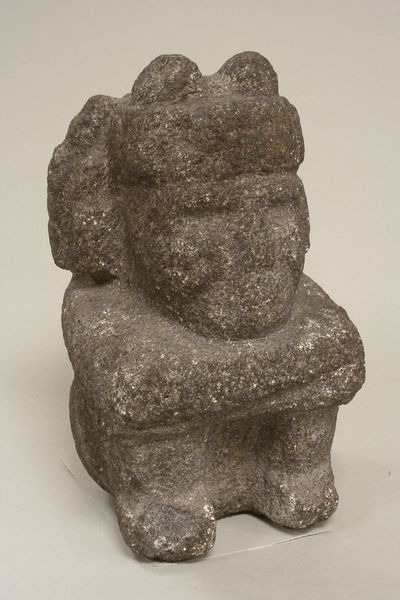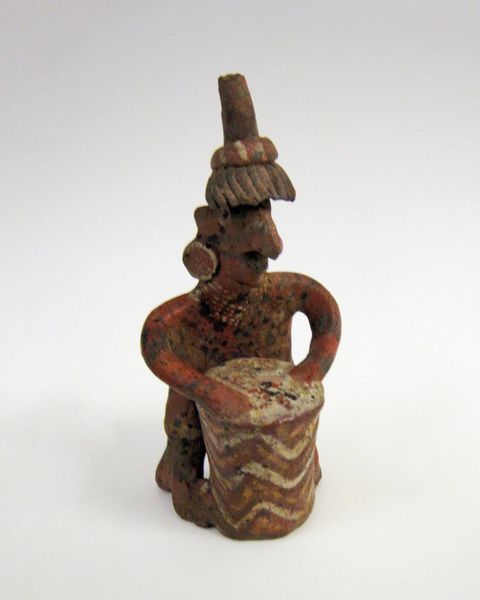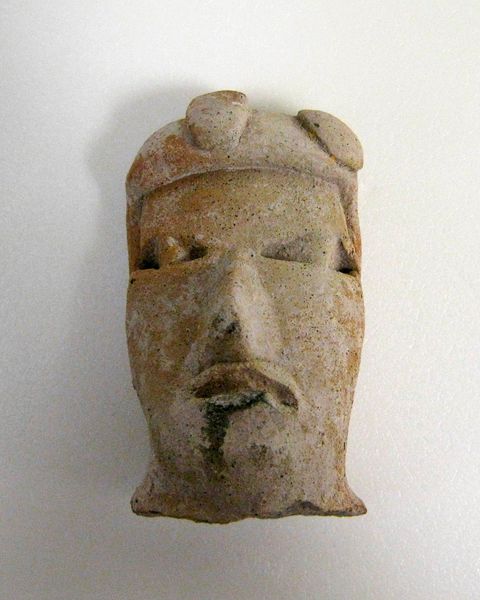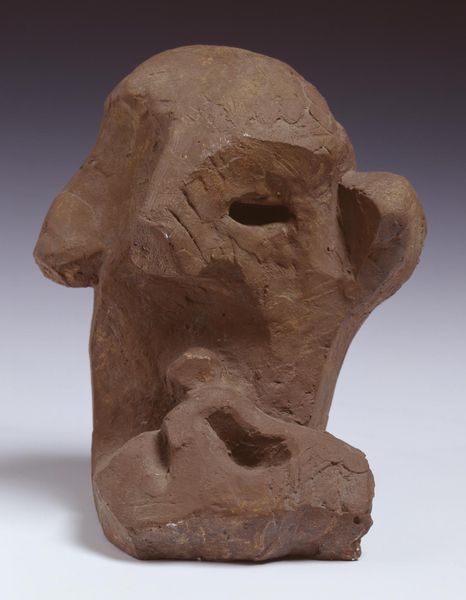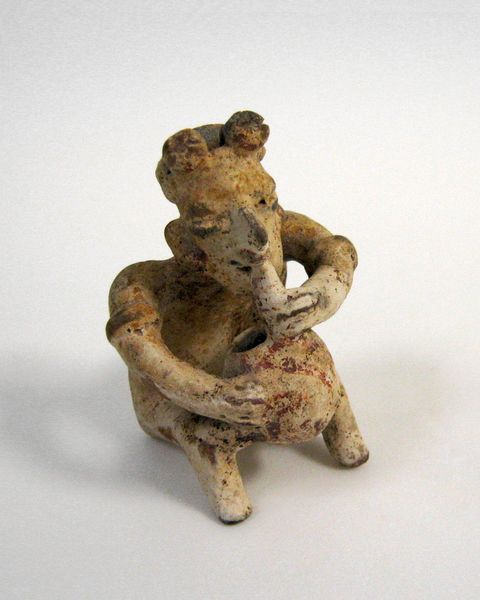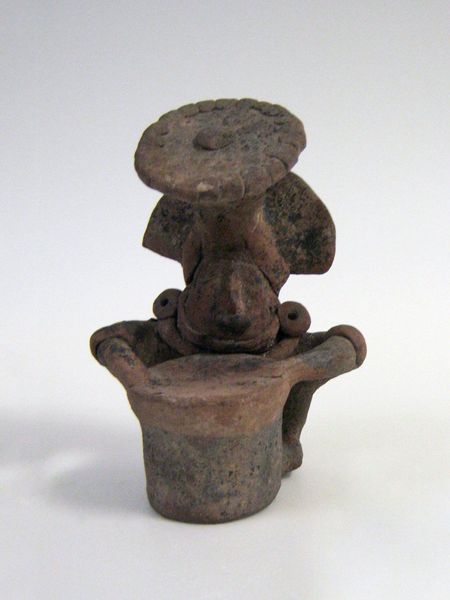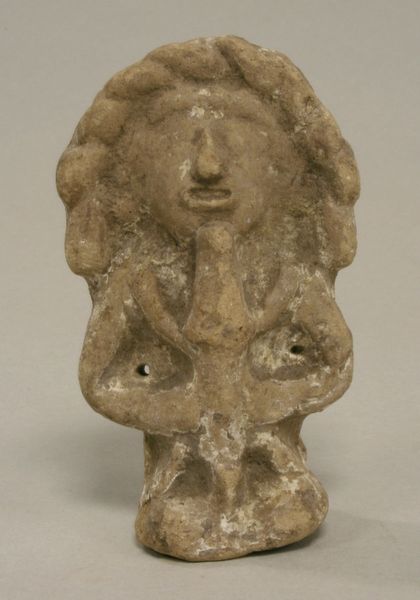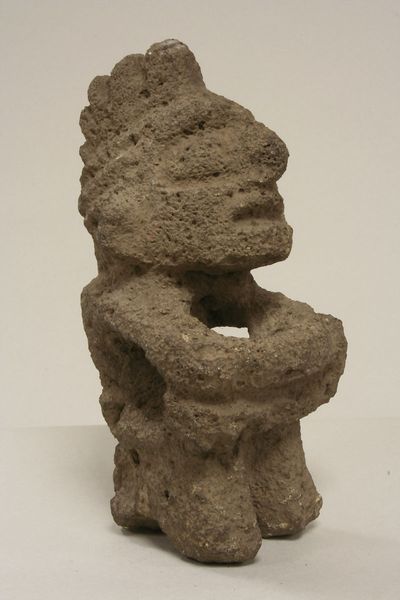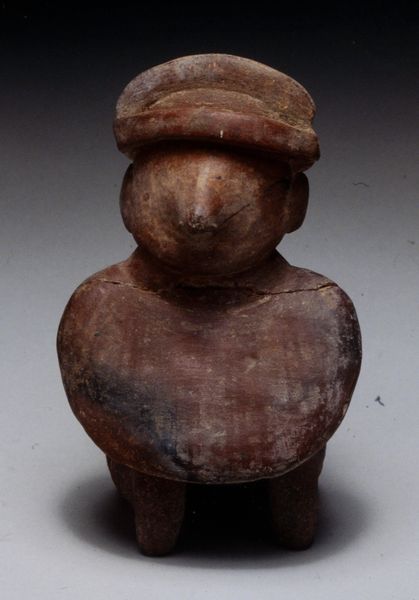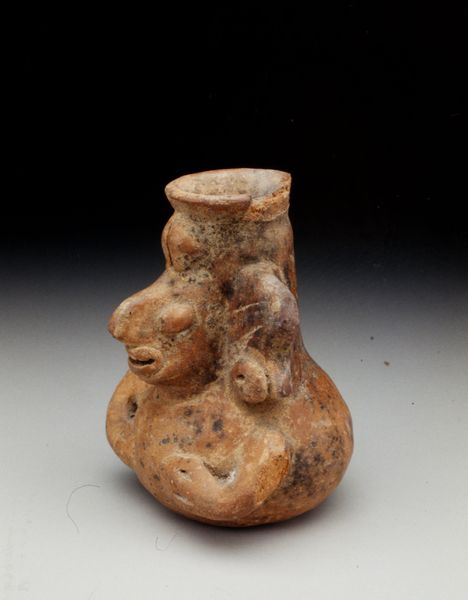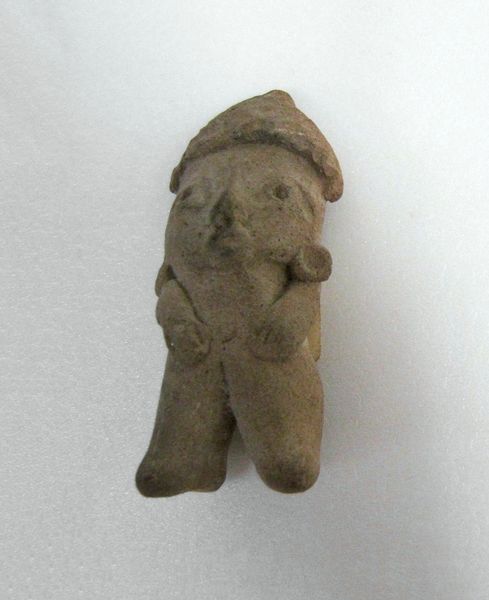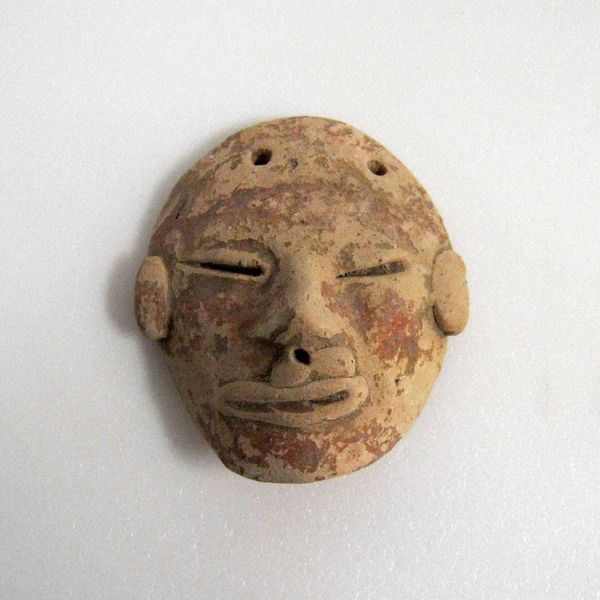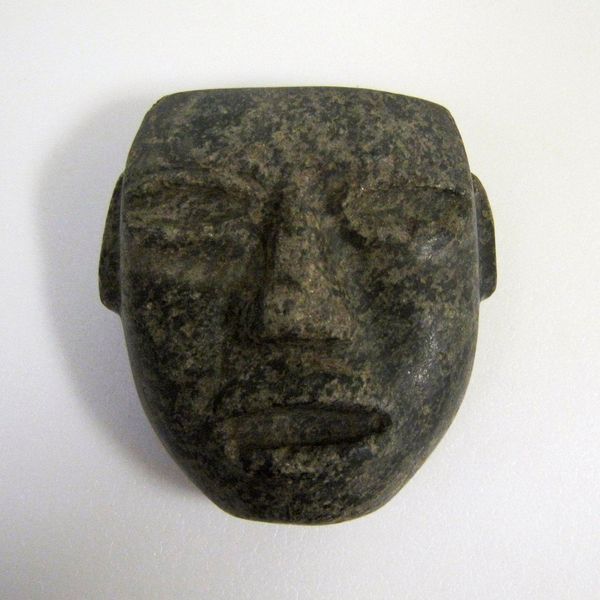
ceramic, sculpture, terracotta
#
sculpture
#
ceramic
#
figuration
#
sculpture
#
terracotta
#
indigenous-americas
Dimensions: 3 1/2 x 3 1/4 x 3 in. (8.9 x 8.3 x 7.6 cm)
Copyright: Public Domain
Editor: So, this ceramic figure, dated somewhere between 201 and 500 AD and attributed to the Nayarit culture, has such a peaceful presence, doesn't it? It almost looks like he's meditating, yet the hands behind the head have this feel of exhaustion, if I'm honest. What's your read on it? Curator: Considering it within a historical context, that supposed feeling of "exhaustion" that you astutely observe invites us to question its original function and audience. Nayarit figures like this one, commonly found in shaft tombs, might represent ancestors, deities, or even just high-ranking individuals. How does understanding that socio-political role change your perception of the figure? Editor: Knowing that it came from a tomb does shift things. Maybe it's not exhaustion but a representation of someone who has passed, a frozen posture immortalizing the person in a significant state. Curator: Precisely! And remember, the placement of objects in tombs, their materials, and their depiction of social roles speaks volumes. Consider the hat he wears - a symbol of status. These details, presented for a community with established customs and beliefs, inform us so much more about societal structure. Editor: That makes sense! So, his headdress probably immediately told the ancient viewer something about his position in society. Curator: Exactly. This also opens up fascinating questions. Was this a specific individual or a more generalized representation? And what power dynamic exists with who would’ve viewed it in a funereal space versus those of a ruling elite? These questions can help you see this object through the eyes of a community that operated very differently from today. Editor: This really changed how I view this object! I am definitely more curious about indigenous communities' social hierarchies, especially how these manifest visually. Curator: Exactly! Art, at any point in time, does a fantastic job visualizing hierarchies of class.
Comments
No comments
Be the first to comment and join the conversation on the ultimate creative platform.
